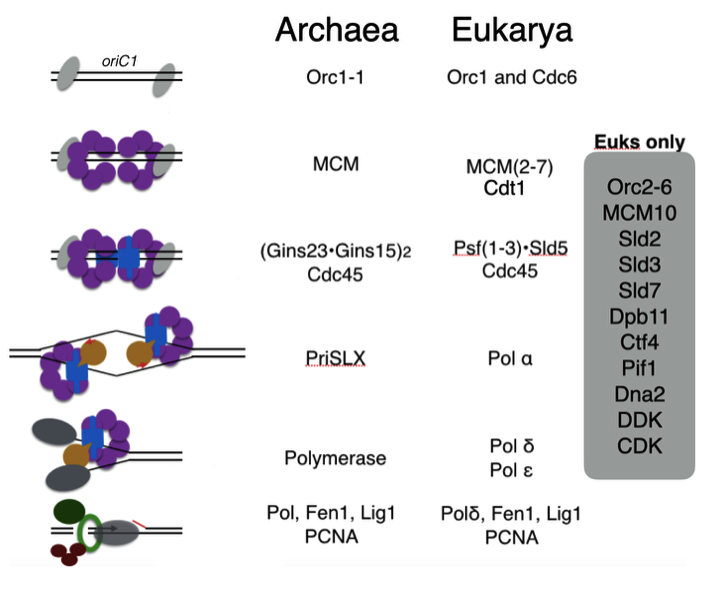DNA Replication
We study the DNA replication machinery of archaea - this apparatus is fundamentally related to the core replication machinery of eukaryotes. Our model organisms of choice, members of the genus Sulfolobus, grow at 80 °C, rendering their proteins intrinsically thermostable. This stability, combined with the ancestral simplicity of the archaeal machinery, presents a wonderfully tractable model that we exploit to dissect the core events at the heart of this essential cellular process.

Recent Key Publications
M. Greci, J. Dooher and S.D. Bell (2022) "The combined DNA and RNA synthetic capabilities of archaeal DNA primase facilitate primer hand-off to the replicative DNA polymerase" Nat. Comm, 13, 1-12
J. Yan, S. Holzer, L. Pellegrini and S.D. Bell (2018) “An archaeal primase functions as a nanoscale caliper to define primer length”. (2018). PNAS, 115, 6697-6702
J. Yan, T.R. Beattie, A. Rojas, K. Schermerhorn, T. Gristwood, S. Albers, P. Roversi, A. Gardner, N.G. Abrescia and S.D Bell (2017) “Identification and characterization of a heterotrimeric archaeal DNA polymerase holoenzyme” Nature Communications, 8, 15075
R.Y. Samson, P Abeyrathne and S.D. Bell (2016) “Mechanism of archaeal MCM helicase recruitment to DNA replication origins” Molecular Cell, 61, 287-296